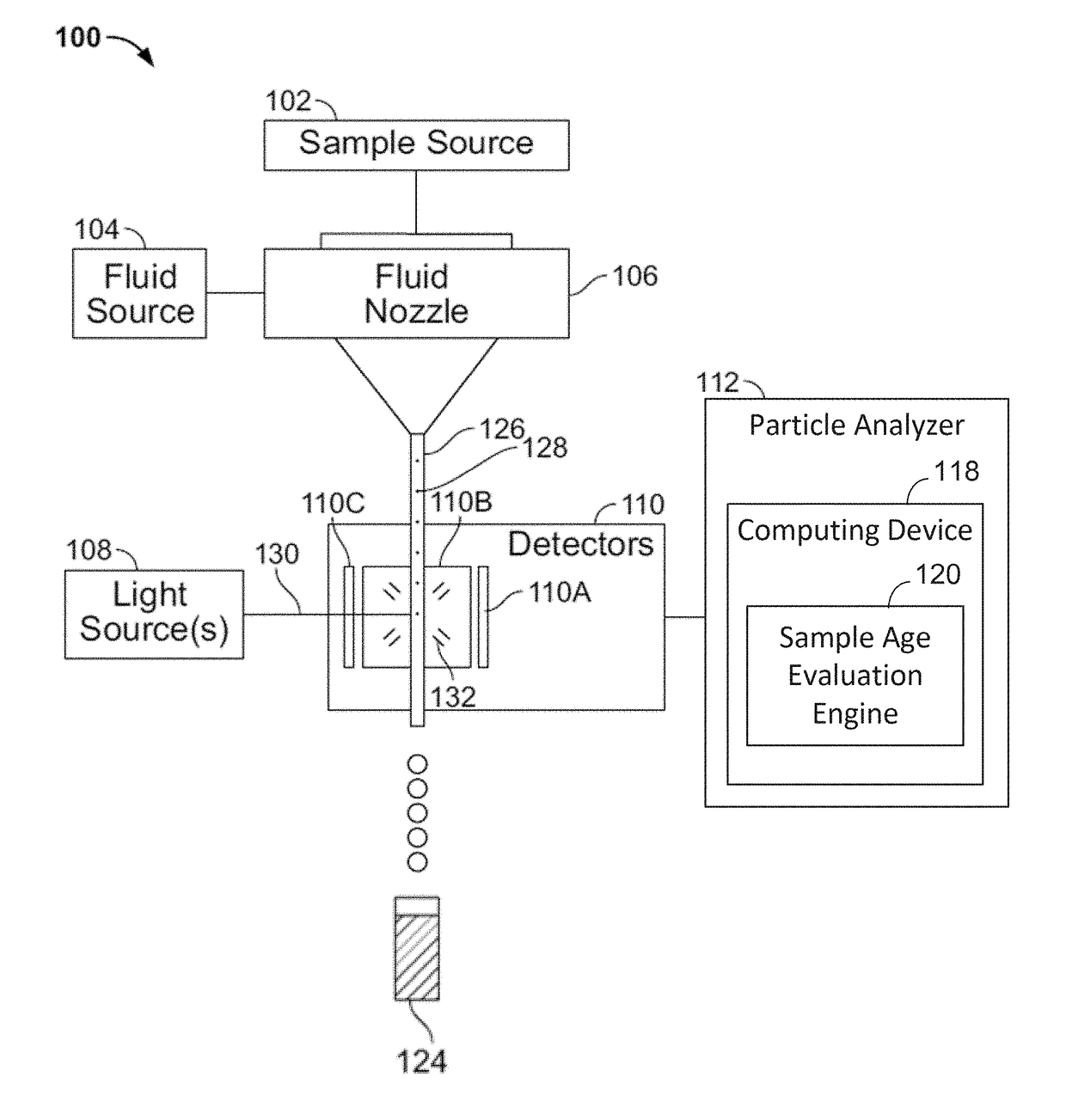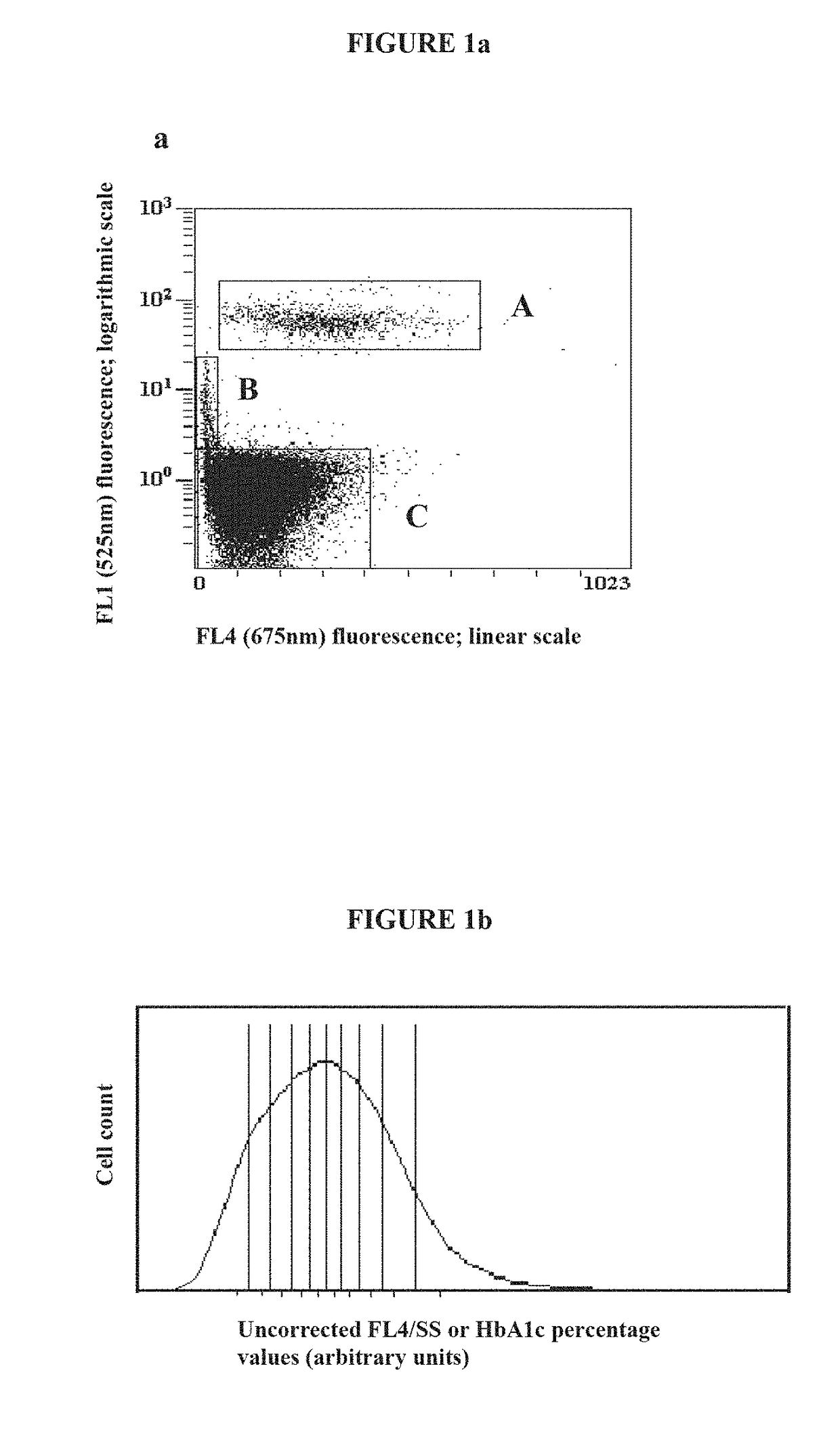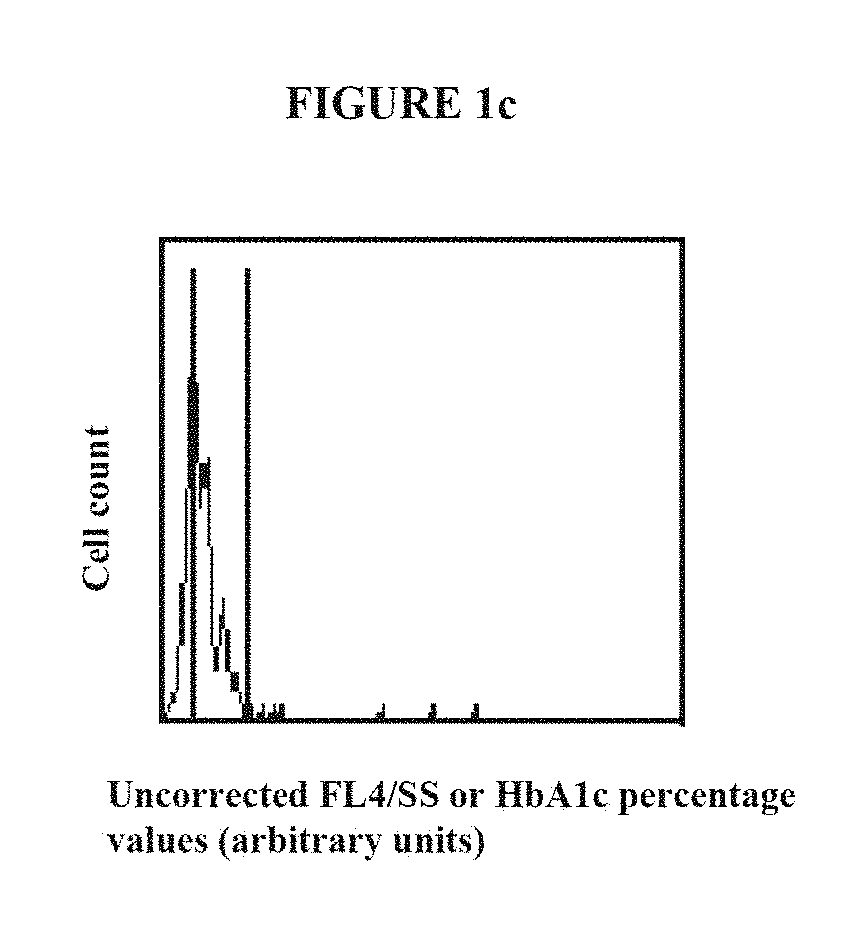Systems and methods to determine the age of cells
a technology of cells and age, applied in the field of systems and methods to determine the age of cells, can solve the problems of inconvenient use, inconvenient use, invasive procedures, etc., and achieve the effect of ensuring the life-span or mean age of red cells
- Summary
- Abstract
- Description
- Claims
- Application Information
AI Technical Summary
Benefits of technology
Problems solved by technology
Method used
Image
Examples
example 1
[0175]An assay measuring cellular hemoglobin and the percentage of HbA1c of a blood sample and the fractionation of the cells into reticulocytes and ten fractions of mature red cells is described. Glucose and Hemoglobin react together irreversibly to form HbA1c (Amadori product). This reaction is a continuous phenomenon as a function of time and of glucose concentration. The formation of HbA1c is an element of control of the glycemic equilibrium of a diabetic patient. Normal value of HbA1c: 5% of total hemoglobin.
Materials and Methods.
[0176]The following materials were used in the assay:[0177]1. A blood sample treated with 0.7 mM ethylenediamine tetraacetic acid (EDTA) as anticoagulant and stored for not more than ten days at 4° C.[0178]2. Sphering reagent; an aqueous solution of 0.137M sodium chloride, 0.005M HEPES, 0.0005M (D+) trehalose, 0.083M formaldehyde, 0.04 mM n-dodecyl beta-D-maltoside, 0.5 ml / l of Proclin-300, 0.5 mg / l of acridine orange and a quantity of sodium hydroxide...
example 2
[0190]Comparison of Correlation Plots of HbA1c Percentage Data from a Reference Laboratory Using Three Different Determinations and of HbA1c Percentage Data Obtained with the Flow Cytometric Procedure.
[0191]The HbA1c percentage was determined by a reference laboratory on 120 samples using three different methods of HbA1c determination; (Primus Ultra2: affinity chromatography, Roche Unimate: immunoturbidimetry, and Tosoh G7 variant: cation-exchange chromatography). Cytometric HbA1c percentage values were determined in the presence of reference control cells having a known percentage of HbA1c. The conversion of arbitrary HbA1c percentage units into percentage HbA1c values is described herein.
Methods and Results
[0192]In a first instance, we showed that HbA1c molecules within the fixed red cells were freely accessible by the fluorescent labelled antibodies. Red cells were formaldehyde fixed and lysed in water and further disintegrated in the presence of detergents. The lysates were used...
example 3
[0199]Data from Six Normal Subjects; Representation of FL4 / SS Values and Corrected FL4 / SS Values in the Different Fractions and Transformation of Percentage of HbA1c in the Fractions into Time.
[0200]This example provides data from six normal subjects and conversion of fraction limit FL4 / SS values into time. For reason of comparison with blood samples from diabetic individuals, in a first approach, blood samples were chosen representing normal non-diabetic individuals supposed to have undergone a constant blood glucose concentration. To further ascertain that the parameters obtained from the normal samples represent a constant blood glucose concentration, the mean of the parameters of 6 normal samples were taken.
[0201]As described in example 1, raw data, produced by the cytometer were used to fractionate mature cell populations into fractions containing equal amounts of cells. The organization of the cells on the HbA1c percentage axis (FIG. 1B) is depending on the augmentation of the...
PUM
 Login to View More
Login to View More Abstract
Description
Claims
Application Information
 Login to View More
Login to View More - R&D
- Intellectual Property
- Life Sciences
- Materials
- Tech Scout
- Unparalleled Data Quality
- Higher Quality Content
- 60% Fewer Hallucinations
Browse by: Latest US Patents, China's latest patents, Technical Efficacy Thesaurus, Application Domain, Technology Topic, Popular Technical Reports.
© 2025 PatSnap. All rights reserved.Legal|Privacy policy|Modern Slavery Act Transparency Statement|Sitemap|About US| Contact US: help@patsnap.com



